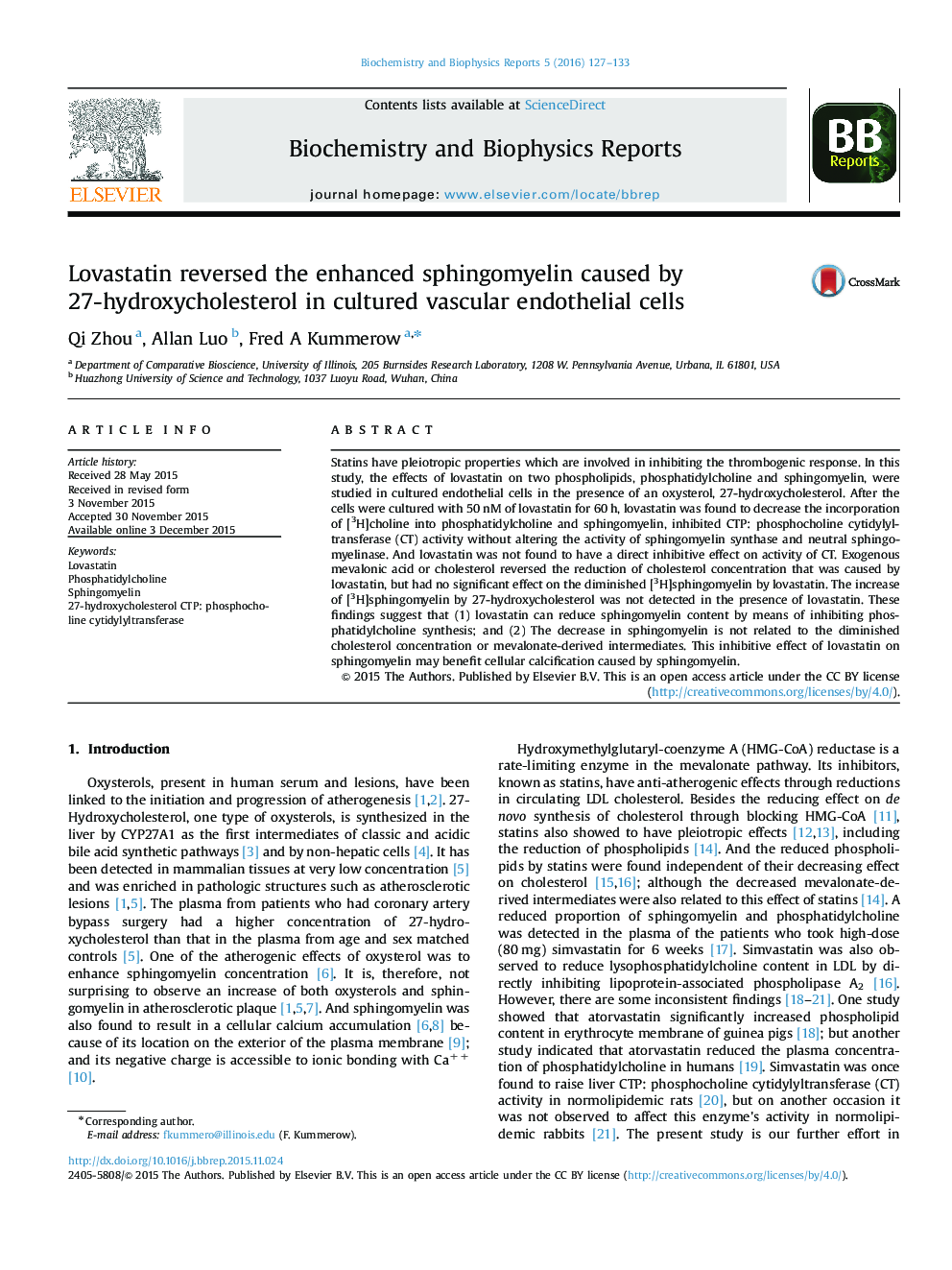| کد مقاله | کد نشریه | سال انتشار | مقاله انگلیسی | نسخه تمام متن |
|---|---|---|---|---|
| 1941711 | 1536903 | 2016 | 7 صفحه PDF | دانلود رایگان |
عنوان انگلیسی مقاله ISI
Lovastatin reversed the enhanced sphingomyelin caused by 27-hydroxycholesterol in cultured vascular endothelial cells
ترجمه فارسی عنوان
لوواستاتین افزایش اسپینگومایینین افزایش یافته توسط 27 هیدروکسی کلسترول را در سلول های اندوتلیال عروقی کشت می کند
دانلود مقاله + سفارش ترجمه
دانلود مقاله ISI انگلیسی
رایگان برای ایرانیان
موضوعات مرتبط
علوم زیستی و بیوفناوری
بیوشیمی، ژنتیک و زیست شناسی مولکولی
زیست شیمی
چکیده انگلیسی
Statins have pleiotropic properties which are involved in inhibiting the thrombogenic response. In this study, the effects of lovastatin on two phospholipids, phosphatidylcholine and sphingomyelin, were studied in cultured endothelial cells in the presence of an oxysterol, 27-hydroxycholesterol. After the cells were cultured with 50Â nM of lovastatin for 60Â h, lovastatin was found to decrease the incorporation of [3H]choline into phosphatidylcholine and sphingomyelin, inhibited CTP: phosphocholine cytidylyltransferase (CT) activity without altering the activity of sphingomyelin synthase and neutral sphingomyelinase. And lovastatin was not found to have a direct inhibitive effect on activity of CT. Exogenous mevalonic acid or cholesterol reversed the reduction of cholesterol concentration that was caused by lovastatin, but had no significant effect on the diminished [3H]sphingomyelin by lovastatin. The increase of [3H]sphingomyelin by 27-hydroxycholesterol was not detected in the presence of lovastatin. These findings suggest that (1) lovastatin can reduce sphingomyelin content by means of inhibiting phosphatidylcholine synthesis; and (2) The decrease in sphingomyelin is not related to the diminished cholesterol concentration or mevalonate-derived intermediates. This inhibitive effect of lovastatin on sphingomyelin may benefit cellular calcification caused by sphingomyelin.
ناشر
Database: Elsevier - ScienceDirect (ساینس دایرکت)
Journal: Biochemistry and Biophysics Reports - Volume 5, March 2016, Pages 127-133
Journal: Biochemistry and Biophysics Reports - Volume 5, March 2016, Pages 127-133
نویسندگان
Qi Zhou, Allan Luo, Fred A Kummerow,
